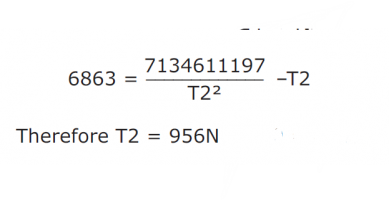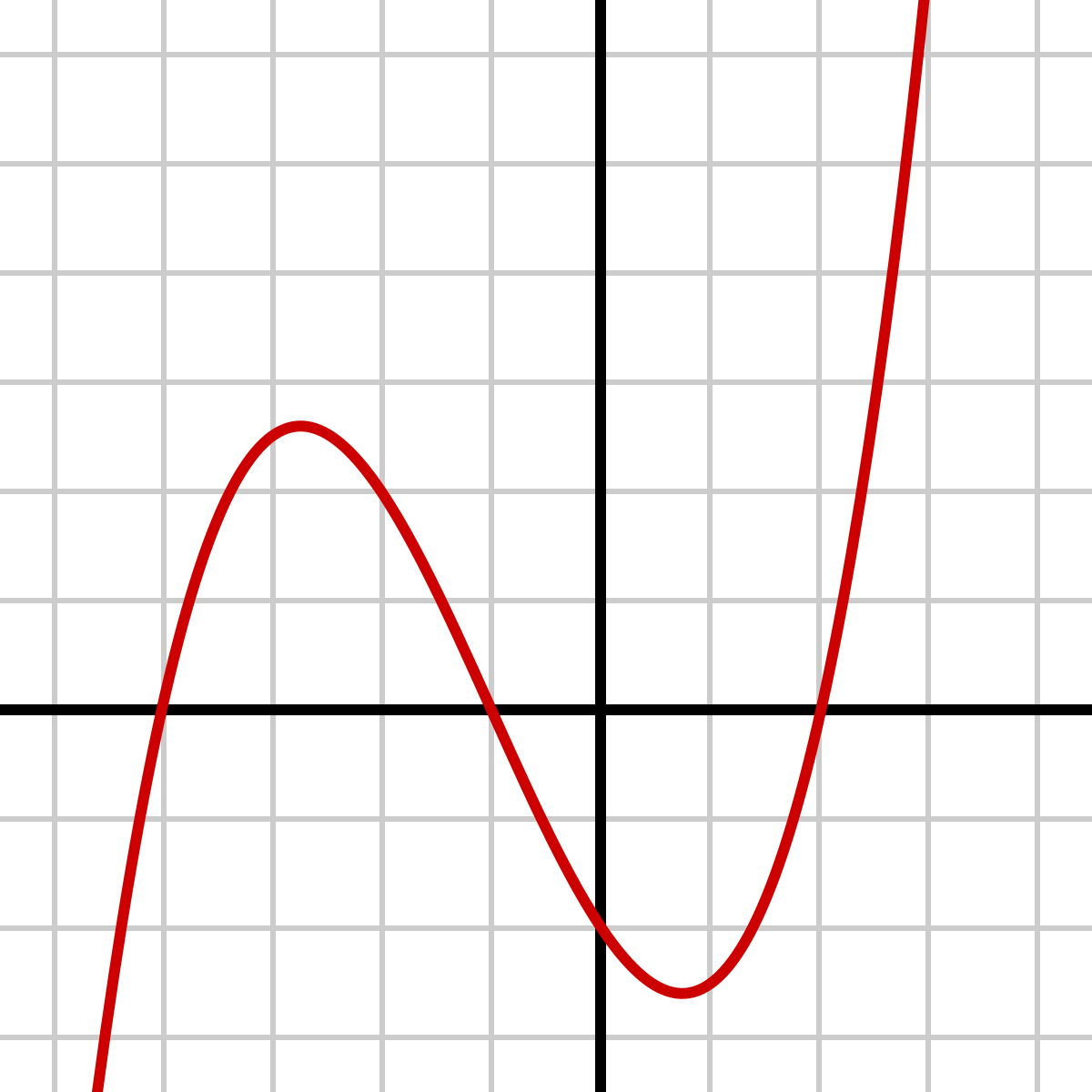DYLANUK11999
New member
- Joined
- Jul 7, 2022
- Messages
- 10
You could multiply by T2^2, but then you'd have to solve a cubic equation, which is very hard to do as a formula.View attachment 33334
Am trying to find how to re-arrange this equation to show that it equals 956N (Although I think it is 955, but hey-ho!)
Basically, I am trying to enter this into excel as this formula will be used often

To whom are you directing this question?Where did N come from.
You could use Newton's method of calculating roots of polynomial functions and estimate the value. But prior to doing that, it is a good idea to plot the function (y = x3 + 6863 * x2 - 7134611197) and have rough approximation/s of the answer/s.View attachment 33334
Am trying to find how to re-arrange this equation to show that it equals 956N (Although I think it is 955, but hey-ho!)
Basically, I am trying to enter this into excel as this formula will be used often

I figured that. It is best to put the N (units) in all or none of the equations.Thanks for all your replies.
N being Newton's
We might if we knew where this formula came from. You call it a "quadratic" but I suspect it's a formula for a cubic equation, seeing as that's what you are solving. Can you show us the source of this expression?I have done a bit more digging and found the attachment formula. Is anyone able to assist in how the highlighted numbers are derived in the quadratic formula?View attachment 33345
Presumably it's related to the method shown here:I have done a bit more digging and found the attachment formula. Is anyone able to assist in how the highlighted numbers are derived in the quadratic formula?View attachment 33345

6863 = 7134611197/t^2 - t
6863*t^2 = 7134611197 - t^3
t^3 + 6863*t^2 - 7134611197 = 0
=========
Convert to a depressed cubic (which has no squared term)...
First, make sure the t^3 term has no coefficient (if it does then remove it by division/ multiplication)
Then, substitute t = x + b where "b" is the t^2 coefficient divided by 3, in this case
b = -6863/3
(x - 6863/3)^3 + 6863*(x - 6863/3)^2 - 7134611197 = 0
x^3 - 47100769/3*x + 453870652975/27 = 0
Now we have a depressed cubic in the form of
x^3 + p*x + q = 0 AA
where p = -47100769/3
and q = 453870652975/27
=========
Equation AA will be made similar to this trig identity...
4*cos^3(theta) - 3*cos(theta) - cos(3*theta) = 0 BB
=========
Substitute x = a*cos(theta) into AA, and constrain a to be positive, giving...
a^3*cos^3(theta) + p*a*cos(theta) + q = 0 CC
Multiply by 4/a^3...
4*cos^3(theta) + 4*p/a^2*cos(theta) + 4*q/a^3 = 0 DD
Now the first terms (of BB and DD) match
--
Equate the 2nd term in both DD and BB...
4*p/a^2*cos(theta) = - 3*cos(theta)
4*p/a^2 = -3
a^2 = -4*p/3
therefore a = 2*sqrt(-p/3)
--
Now equate 3rd term in both DD and BB...
cos(3*theta) = -4*q/a^3
= -4*q/(2*sqrt(-p/3))^3
= -q/(2*(-p/3)^(3/2))
theta = (2*k*pi ± acos(-q/(2*(-p/3)^(3/2))))/3
Plug in our numbers
= (2*k*pi ± acos( -(453870652975/27)/(2*(-(-47100769/3)/3)^(3/2)) ))/3
= (2*k*pi ± acos( -453870652975/646505155294 ))/3
--
NEARLY DONE!
Now remember that we set...
x = a*cos(theta)
x = 2*sqrt(-p/3)*cos(theta) using the value of "a" found above
Also remember that t = x + b (see above)...
t = 2*sqrt(-p/3)*cos(theta) + b
t = 2*sqrt((47100769/3)/3)*cos(theta) + b
t = 13726/3*cos(theta) + b
t = 13726/3*cos(theta) - 6863/3
Finally...
Using theta = (2*k*pi + acos(-453870652975/646505155294))/3
k=0 gives t = 955.27763725558437718745
k=1 gives t = -6704.26681472689808061425
k=2 gives t = -1114.01082252868629661893
It also works for the "minus" values
theta = (2*k*pi - acos(-453870652975/646505155294))/3
k=0 gives t = 955.27763725558437718745
k=1 gives t = -1114.01082252868629657318
k=2 gives t = -6704.26681472689808066001Apologies for the late reply, I thought the thread had gone dead as I had not received any notifications. To be cheeky is there any way of having the excel spreadsheet that you used above?I found a site with a very usable formula:
Here are the values used in that formula for your problem:
This gives all three solutions as found by graphing the cubic equation (the first being the positive solution you want):
The only thing to complain about is that this isn't the same formula used by the site you found, so we can't explain their numbers without digging deeper. I see no reason to do so.
Let's see if I'm allowed to attach it: no.is there any way of having the excel spreadsheet that you used above?
No problem i have done this now. Thanks again!Apologies for the late reply, I thought the thread had gone dead as I had not received any notifications. To be cheeky is there any way of having the excel spreadsheet that you used above?
Thankyou for taking the time to reply.
And thankyou to everyone else that commented.
Add the following two cells to Dr. Peterson's sheet:-So basically the workaround if the Arccosine is greater or less than -1,1
